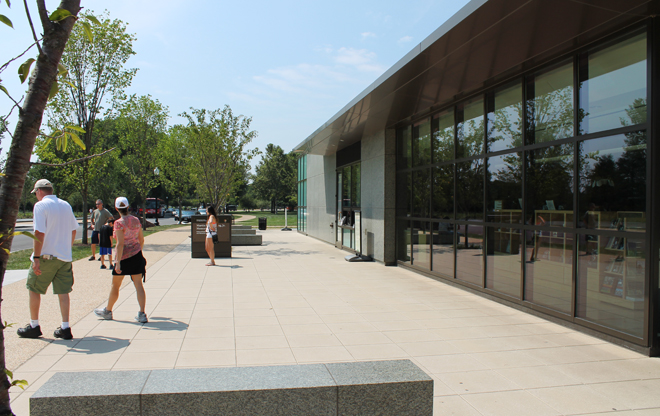
A Symbolic Address
The official address of the memorial, 1964 Independence Avenue, SW, commemorates the Civil Rights Act of 1964.
Image: American Society of Landscape Architects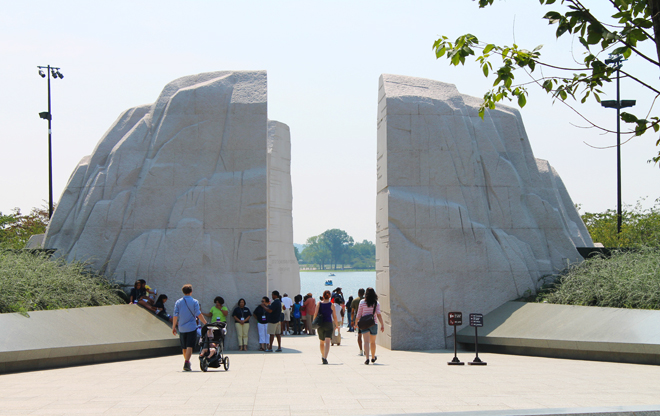
Gap in the Mountain of Despair
The memorial’s location in West Potomac Park forms a visual “line of leadership” from the Lincoln Memorial to the Jefferson Memorial.
Image: American Society of Landscape Architects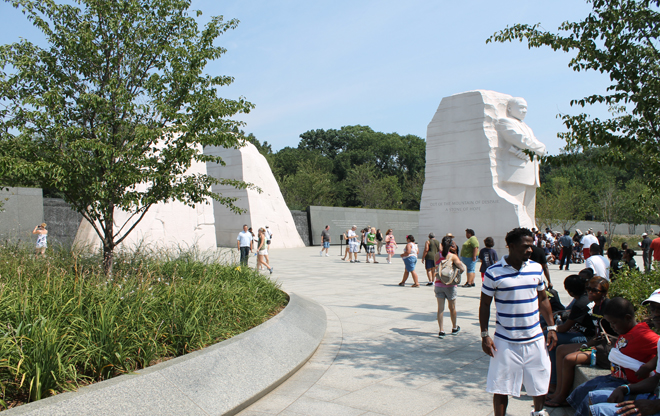
Plantings
A combination of seat walls and curbs define planting area to make them easy to maintain. Oehme, van Sweden’s design for the site employs the sound of cascading water, which draws visitor attention before it becomes visible.
Image: American Society of Landscape Architects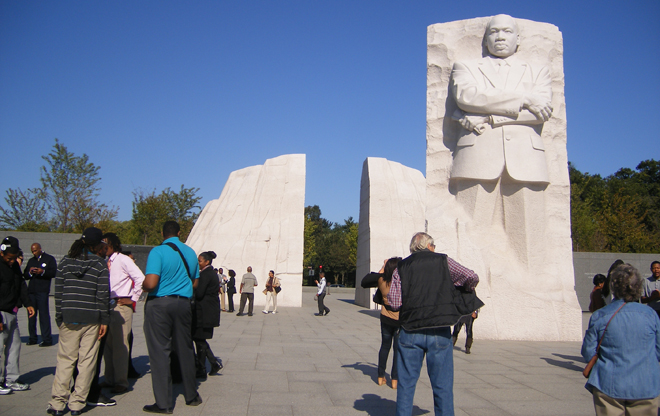
King in the Stone of Hope
Martin Luther King, Jr. is the first African-American to be memorialized on the National Mall, and the fourth non-President, joining George Mason, John Paul Jones, and John Ericsson.
Image: National Park Service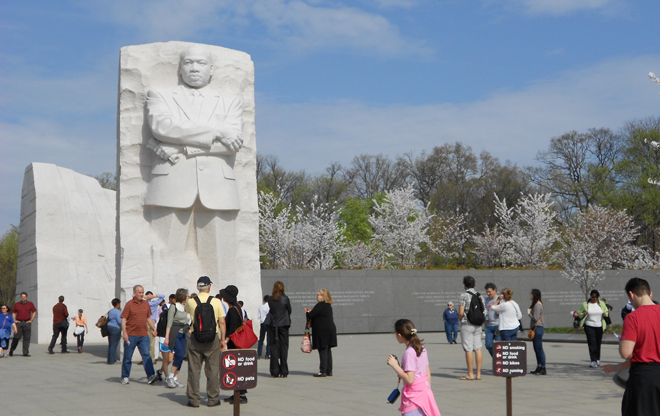
Flowering Cherry Trees
In keeping with the rest of the Tidal Basin, the memorial includes extensive plantings of Yoshino cherry blossom trees, their blossoming period coinciding with the anniversary of King’s assassination.
Image: National Park Service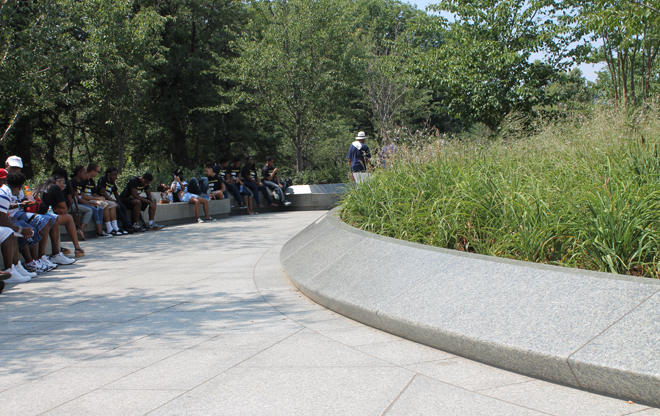
Accessible to All
Ample seating is provided while curb shapes prevent activities that damage stone, such as skateboarding. Justice and civil rights are also emphasized, with no steps or physical barriers to people with disabilities in the memorial.
Image: American Society of Landscape Architects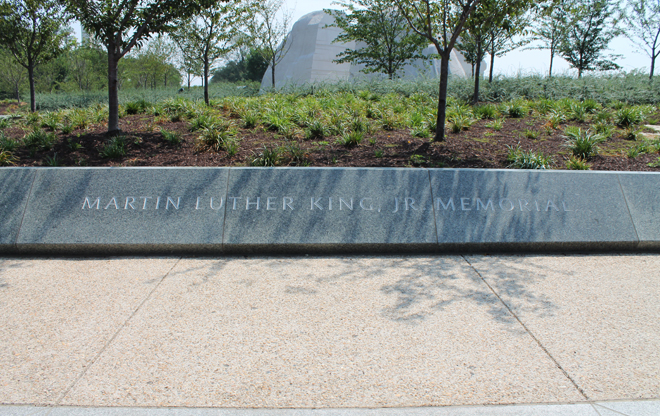
Unique Fonts
A text font was developed to use for all memorial inscriptions.
Image: American Society of Landscape Architects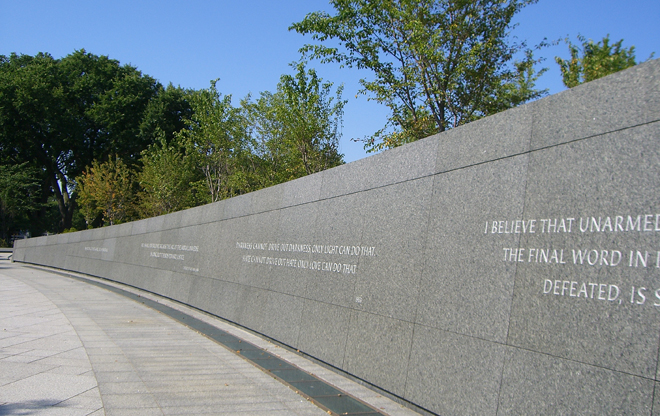
Inscription Wall
A curved inscription wall extends to each side of the Mountain of Despair, which is flanked by two fountains.
Image: National Park Service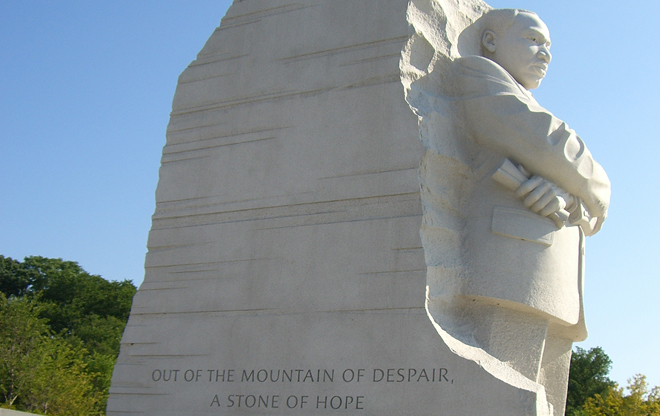
Sculpture of King
King in the Stone of Hope that moved out of the Mountain of Despair.
Image: National Park Service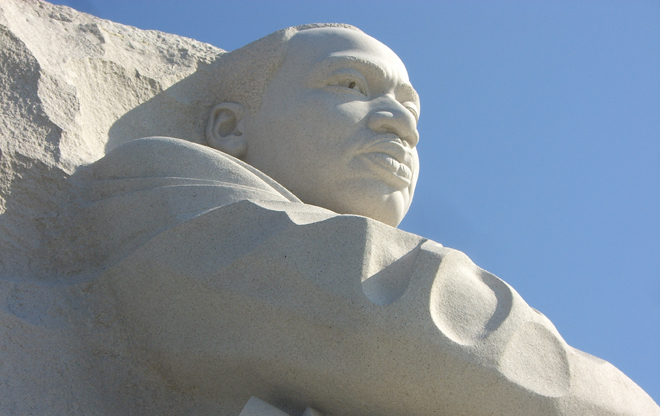
Close-up of the Statue
Image: National Park Service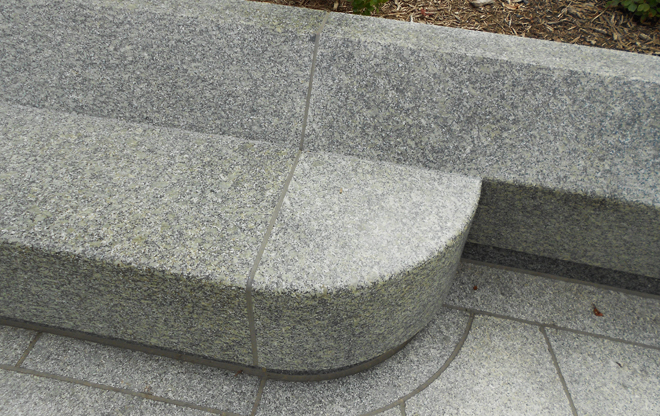
Stone Seating Detail
Image: National Park Service